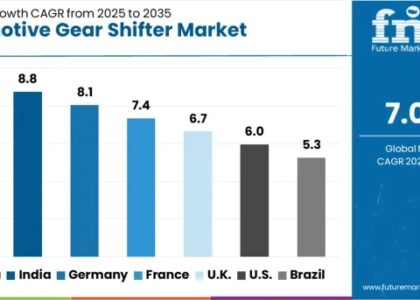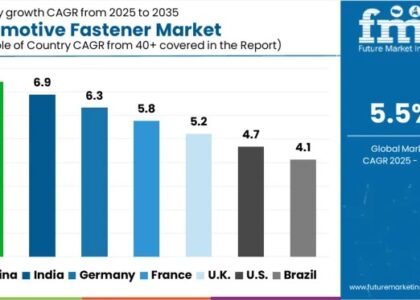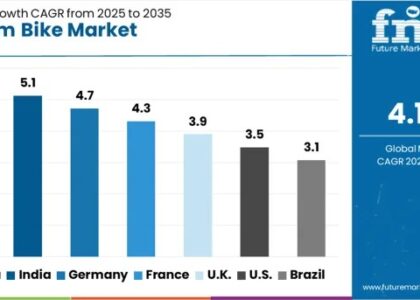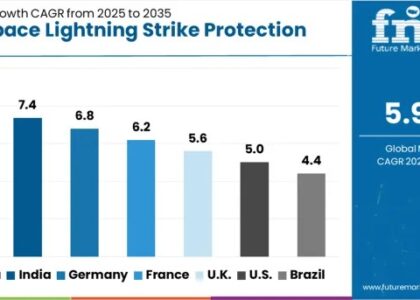Introduction
In today’s ever-evolving world, sustainable and eco-friendly practices are taking the forefront in many industries. One such industry that has been making waves is the Timber Wrap Films Market. This comprehensive guide will walk you through all you need to know about timber wrap films, the driving factors behind its increasing popularity, its various applications, and why it’s a game-changer in the world of timber packaging.
The Basics of Timber Wrap Films
Timber wrap films, often referred to as lumber wrap or wood wrap films, are a type of specialized packaging material used to protect timber and wood products during transportation and storage. These films are designed to safeguard wood from external elements, such as moisture, UV radiation, and physical damage.
According to the recently released global timber wrap films industry analysis report by FMI, the market is expected to achieve a value of approximately US$ 464.8 million in 2023, with a projected Compound Annual Growth Rate (CAGR) of 4.3% during the forecast period. Furthermore, the report forecasts the market’s overall valuation to soar to US$ 714.2 million by the conclusion of 2033.
Request Sample Report: https://www.futuremarketinsights.com/reports/sample/rep-gb-9511
Market Drivers-
- Growing Timber Industry: The timber wrap films market is closely tied to the timber and forestry industry. As the demand for timber and wood products continues to rise globally, the need for protective packaging, such as timber wrap films, also increases.
- Preservation of Timber Quality: Timber wrap films play a crucial role in protecting timber from environmental factors like moisture, UV radiation, and physical damage. Preserving the quality of timber during storage and transportation is a significant driver for this market.
- Sustainable Packaging Solutions: Timber wrap films are often designed to be eco-friendly and recyclable. With the growing emphasis on sustainability and environmental responsibility, these films are in high demand.
- Efficiency in Handling and Storage: Timber wrap films make it easier to handle and store timber products. They enable the bundling of timber in an organized and efficient manner, reducing labor costs and improving logistics.
- Construction and Infrastructure Development: The construction and infrastructure sectors are key consumers of timber products. With increased construction activities worldwide, the demand for timber wrap films to protect and transport these materials has risen.
- Global Trade in Timber: International trade of timber and wood products is expanding. Timber wrap films are essential for safeguarding timber during long-distance transportation, which is becoming more common due to global supply chains.
- Minimization of Timber Loss: Timber wrap films help reduce timber loss due to factors like moisture-induced decay and insect damage. Minimizing losses is crucial for timber businesses looking to optimize their profits.
Competitive Landscape-
Key players profiled in the report timber wrap films industry include –
- RKW SE,
- Balcon Plastics Limited,
- Ab Rani Plast Oy.,
- Polytarp Product,
- SCOTT Lumber Packaging, LLC,
- InterWrap Inc.,
- Flexpak Corp.,
- Inteplast Group,
- Multifab Packaging,
- Trioplast Industrier AB,
- Polymax, Inc.,
- Davidson Plastics Ltd.,
- Flexoplas Packaging Limited,
- Polyprint Packaging Limited,
- Pak-Line Limited,
- Pakaflex Pty Limited,
- Tri Pac Inc., and
- Intertape Polymer Group Inc.
Market Restraints-
- Competition from Alternative Materials: Timber wrap films face competition from alternative packaging materials, such as reusable straps, steel bands, and other types of protective covers. These alternatives can sometimes be considered more cost-effective or environmentally friendly.
- Environmental Concerns: While timber wrap films are designed to protect timber, the environmental impact of these films, especially non-recyclable or non-biodegradable options, is a concern. This can lead to restrictions or reduced demand in regions with stringent environmental regulations.
- Cost Fluctuations of Raw Materials: The cost of raw materials used in manufacturing timber wrap films, such as plastic resins, can be subject to price fluctuations, impacting production costs.
- Limited Durability: Some timber wrap films may not provide sufficient durability in harsh conditions, and they can deteriorate faster than expected. This can lead to additional costs for re-wrapping or timber replacement.
- Inadequate UV Protection: In regions with high sun exposure, some timber wrap films may not offer adequate UV protection. This can result in sun damage to the timber, reducing its quality and value.
- Handling Challenges: Applying and removing timber wrap films can be a labor-intensive process, and it may require special equipment. The complexity of handling these films can be a restraint for some businesses.
- Supply Chain Disruptions: Disruptions in the supply chain, such as natural disasters, shipping delays, or global events like the COVID-19 pandemic, can affect the availability of timber wrap films and lead to production delays.
Challenges and Innovations in the Timber Wrap Films industry
The Timber Wrap Films Market is not without its challenges. Some of the key hurdles faced by manufacturers and suppliers include:
Thickness and Strength Balance
Manufacturers strive to strike the perfect balance between the thickness and strength of Timber Wrap Films, ensuring they are both durable and cost-effective.
Eco-Friendly Alternatives
As environmental concerns gain momentum, the industry is exploring more eco-friendly alternatives to traditional Timber Wrap Films without compromising on performance.
Customization
Timber products come in various shapes and sizes, requiring customizable Timber Wrap Films to fit specific packaging needs.
Ready to Learn About Our Approach? Explore Our Methodology: https://www.futuremarketinsights.com/request-report-methodology/rep-gb-9511
Key Segmentations-
by Thickness:
- Up to 75 Micron
- 76 to150 Micron
- 151 to 225 Micron
- Above 225 Micron
by Material Type:
- Polyethylene (PE)
- High Density Polyethylene (HDPE)
- Low Density Polyethylene (LDPE)
- Polypropylene (PP)
About Future Market Insights (FMI)
Future Market Insights, Inc. (ESOMAR certified, recipient of the Stevie Award, and a member of the Greater New York Chamber of Commerce) offers profound insights into the driving factors that are boosting demand in the market. FMI stands as the leading global provider of market intelligence, advisory services, consulting, and events for the Packaging, Food and Beverage, Consumer, Technology, Healthcare, Industrial, and Chemicals markets. With a vast team of over 5000 analysts worldwide, FMI provides global, regional, and local expertise on diverse domains and industry trends across more than 110 countries.
Contact Us:
Future Market Insights Inc.
Christiana Corporate, 200 Continental Drive,
Suite 401, Newark, Delaware – 19713, USA
T: +1-845-579-5705
For Sales Enquiries: sales@futuremarketinsights.com
Website: https://www.futuremarketinsights.com
LinkedIn| Twitter| Blogs | YouTube






